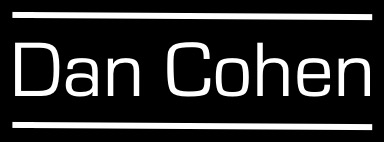Sorry, I don’t have a better name for it, but I feel it needs a succinct name so we can identify and discuss it. It’s not a tossed-off short blog post. It’s not a long, involved essay. It’s somewhere in-between: it’s a blessay.
The blessay is a manifestation of the convergence of journalism and scholarship in mid-length forms online. (For those keeping track at home, #7 on my list of ways that journalism and the humanities are merging in digital media). You’ve seen it on The Atlantic‘s website, on smart blogs like BLDGBLOG and Snarkmarket, and on sites that aggregate high-quality longform web writing.
Some characteristics of the blessay:
1) Mid-length: more ambitious than a blog post, less comprehensive than an academic article. Written to the length that is necessary, but no more. If we need to put a number on it, generally 1,000-3,000 words.
2) Informed by academic knowledge and analysis, but doesn’t rub your nose in it.
3) Uses the apparatus of the web more than the apparatus of the journal, e.g., links rather than footnotes. Where helpful, uses supplementary evidence from images, audio, and video—elements that are often missing or flattened in print.
4) Expresses expertise but also curiosity. Conclusive but also suggestive.
5) Written for both specialists and an intelligent general audience. Avoids academic jargon—not to be populist, but rather out of a feeling that avoiding jargon is part of writing well.
6) Wants to be Instapapered and Read Later.
7) Eschews simplistic formulations superficially borrowed from academic fields like history (no “The Puritans were like Wikipedians”).
I suspect readers of this blog know the genre I’m talking about. Am I missing other key characteristics of the blessay? What are some exemplary instances?
UPDATE: Unsurprising griping about the name on Twitter. Please: give me a better name, one that isn’t confused with other genres. Other suggestions: Giovanni Tiso: “essay” (confusing, but gets rid of the hated “bl”); Suzanne Fischer likes Anne Trubek’s suggestion of “intellectual journalism” (seems to favor the journalism side to me). As I’ve said in this space before, writing is writing; I’d love to call this genre just “the essay” or, yes, “writing,” but I wrote this post because I believe if we go that route the salient characteristics of the genre will be lost in a night in which all cows are black.
UPDATE 2: Much headway being made on Twitter in response to this post. Yoni Appelbaum puts his finger on it: “It’s not journalism. It’s not blogging. It’s practicing the art of the essay in the digital space.” That’s right. Thus Yoni’s suggestion for a name: “Simplest is sometimes best. These are Digital Essays – composed, distributed, and tailored for the format.” Anne Trubek and Tim Carmody worked to define the audience. Anne spoke of readers of the print Atlantic, the New Yorker, and other middle brow gatherings, and authors like Trilling. Tim responded: “The audience for this is similar: para-academic, post-collegiate white-collar workers and artists, with occasional breakthroughs either all the way to a ‘high academic’ or to a ‘mass culture’ audience.”
UPDATE 3: Back to the name: Some perhaps better suggestions are surfacing. Sarah Werner mentioned a word I often use in this space for the genre: “pieces.” Anne Trubek gives it that classic modifier: “thought pieces.” Kari Kraus reminds me that MediaCommons uses “middle-state,” which has some charms, but is a bit opaque.
UPDATE 4: So of course Stephen Fry would beat me to the coinage of “blessay” (thanks, Dragonweb). Again, the point of this exercise is less about the name than about a set of traits. A blessay—or whatever we want to call it—isn’t just a long blog post or a short academic article posted online. It has certain stylistic elements. And it doesn’t rule out other kinds of intelligent online writing.

Leave a Reply
You must be logged in to post a comment.